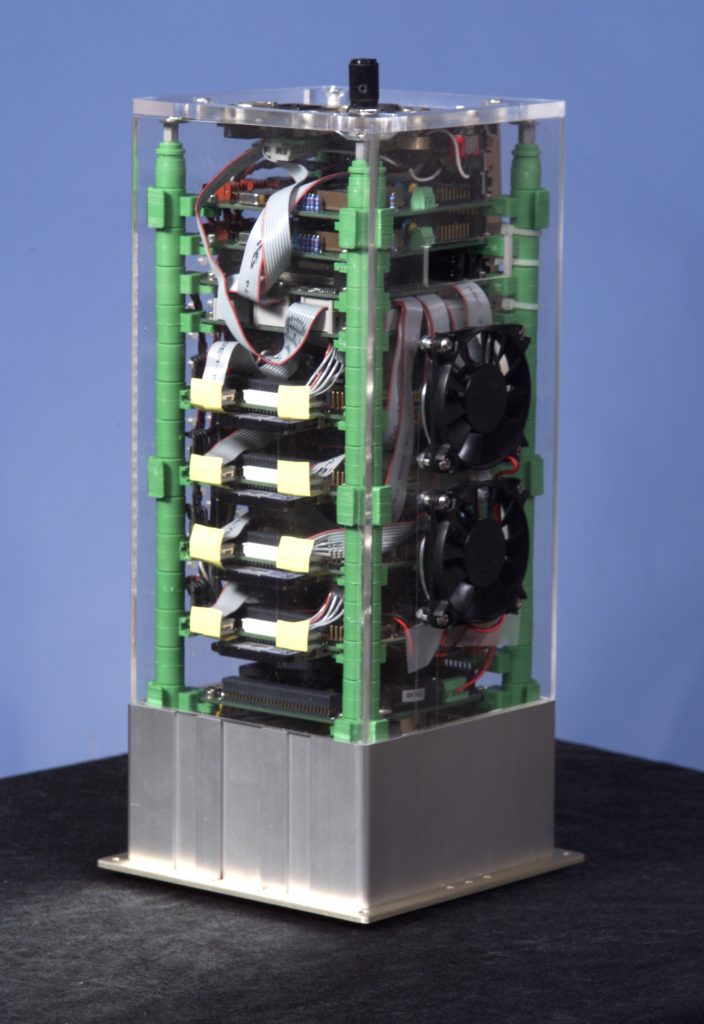LIVERMORE, Calif. — Researchers at the Department of Energy’s National Nuclear Security Administration’s Sandia National Laboratories have built a portable cluster computer, roughly the size of a bread box, that can easily be stored in the overhead bin of an airplane. It is used to demonstrate parallel processing of large, numerically intense problems, such as the simulation of molecular interactions or dynamics of complex events, such as chemical reactions and climate change prediction.
A cluster computer normally combines multiple commodity desktop-sized personal computers to work in parallel on problems too large for a single computer. Sandia has developed cluster computers over the past decade as an inexpensive and simple way to meet the Labs’scientific computing requirements. This “breadbox” computer is also made of commodity computer parts, but the parts are small, embedded systems normally intended for use in cars, cell phones and watches (where they are intended to run on batteries), rather than desktop computer components.
Researcher Rob Armstrong showed the Linux cluster of four CPUs at Supercomputing 2001 in November. Armstrong just stowed the commodity cluster in the overhead airplane bin on his flight From Sandia’s Livermore, Calif. site to the meeting in Denver and back. (Its overall measurements are 5.3x 5.3 x 13.)
The next month, Sandia’s Mitch Williams won a “Work in Progress” presentation at the annual Large Installation System Administration conference.
“It¨s being touted as a small Linux cluster with portability for tutorials, demonstrations and road shows, ” Williams said. “The alternative for folks who want to go to an exhibition with a cluster computer is to spend months coordinating the shipping of a rack of perhaps eight full-size personal computers.” “It’s no fun,” said Armstrong, who has done this. “It’s very cool that you can get it into that small space.” Both Oak Ridge and Los Alamos national laboratories have expressed interest in building their own versions, inspired by this early example.
The cluster uses the PC104 “embedded system” hardware standard, with units stacked like a club sandwich. All of the components, except the see-through Lexan case, were purchased off-the-shelf from embedded system vendors. Although the four CPUs don’t offer the power and speed of a larger cluster, they will still run software created for cluster computing, so specialists can demonstrate their code at a remote location much like other presenters use laptop computers on the road to present their wares.
Besides the portability advantage, Armstrong says, the approach is also attractive to vendors seeking a more compact way to offer a lot of computing horsepower. “It’s certainly far more dense than hooking PCs together,” he said.
The Sandia researchers have created a web site for those interested in creating their own “cluster in a breadbox”: http://eri.ca.sandia.gov/.

